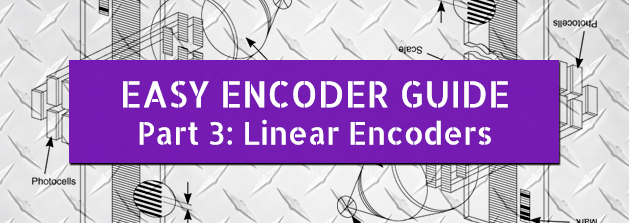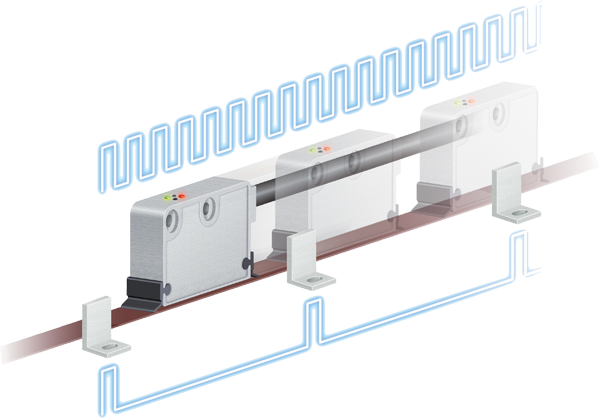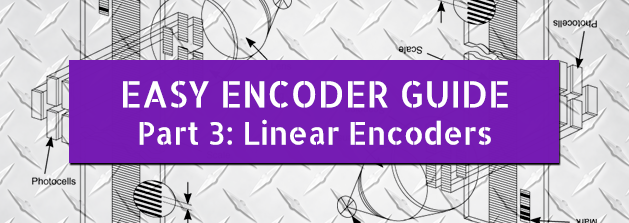
Part 1 of the Easy Encoder Guide reviewed what an encoder is, the differences between types of encoders and the varying output configurations. Part 2 of the Easy Encoder Guide continued to examine rotary encoders and applications. Now Part 3 of the Easy Encoder Guide will focus on linear encoders and their operation.
What is a Linear Encoder?
A linear encoder is a sensor, transducer or reading-head linked to a scale that encodes position. The sensor reads the scale and converts position into an analog or digital signal. Movement is determined from changes in position with time. Both optical and magnetic linear encoder types function using this type of method. However, it is their physical properties which make them different.
How do Optical Linear Encoders Work?
In optical systems, the light source and lens produce a parallel beam of light which passes through four windows of the scanning reticle. The four scanning windows are shifted 90 degrees apart. The light then passes through the glass scale and is detected by photo sensors. The scale then transforms the detected light beam when the scanning unit moves.
The detection of the light by the photo sensor produces sinusoidal wave outputs. The linear encoder system then combines the shifted signals to create two sinusoidal outputs which are symmetrical but 90 degrees out of phase from each other. A reference signal is created when a fifth pattern on the scanning reticle becomes aligned with an identical pattern on the scale. (Refer to Figure 5)

Figure 5 – Components of an Optical Linear Encoder
How does a Magnetic Linear Encoder Work?
This output signal frequency is proportional to the measuring speed and the displacement of the sensor. Since a linear encoder detects change in the magnetic field, the interference of light, oil, dust, and debris have no effect on this type of system; therefore they offer high reliability in harsh environments.

Figure 6 – Pulse Train of a Magnetic Linear Encoder
How are Rotary Encoders Controlled?
The key components of a linear encoder are a scanning unit, sensor, transducer or read head, paired with a transmissive, reflective or magnetically coded scale, which encodes position. The scale of a linear encoder is generally made of glass or metal alloy and mounted stationary to a support. The scanning unit contains a light source, photocells, and a second glass piece called the scanning reticle. Collectively, the linear encoder is able to convert motion into digital or analog signals to determine the change in position over time.
Conclusion
Now that we've examined how linear encoders work, we're ready to move on to the last part of the Easy Encoder Guide: Applications.
Stay tuned for Part 4 of the Easy Encoder Guide!
In the meantime, if you have any questions about using encoders or you're seeking consultation for your next project, contact our experienced staff for a free consultation.
You may also be interested in reading:


